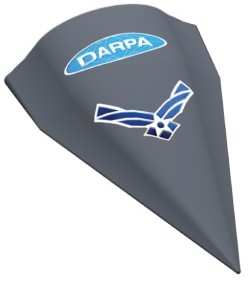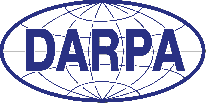First Flight Ended In Deliberate Ditching In The Ocean
DARPA is reportedly preparing for a second test of the
Hypersonic Test Vehicle after the unmanned aircraft's first flight
ended in the deliberate loss of the aircraft for safety
reasons.

Falcon HTV-2 Image Courtesy DARPA
DARPA says the Falcon program objectives are to develop and
demonstrate hypersonic technologies that will enable prompt global
reach missions. The technologies include high lift-to-drag
techniques, high temperature materials, precision navigation,
guidance and control, communications through plasma, and an
autonomous flight safety system. Leveraging technology developed
under the Hypersonic Flight (HyFly) program, Falcon will address
the implications of hypersonic flight and reusability using a
series of hypersonic technology vehicles (HTVs) to incrementally
demonstrate these required technologies in flight.
The initial test flight called for the HTV-2 to be accelerated
into the Earth’s upper atmosphere, separate from the rocket,
descend into the atmosphere, and glide across the Pacific Ocean at
more than 13,000 miles per hour. HTV-2 was intended to reach its
destination in less than 30 minutes and impact in the ocean north
of the Reagan Test Site in the Kwajalein Atoll, a total distance
from lift-off to impact of about 4,100 nautical miles.
The independent Engineering Review Board (ERB) chartered to
examine data collected during the Falcon Hypersonic Technology
Vehicle’s (HTV-2) first flight has completed what it
described as an extensive six-month review. The ERB concluded that
the anomaly resulted from flight control authority limitations to
operate at the angle of attack the vehicle was programmed to fly
for the speed and altitude of the flight.

Detailed analysis conducted by the ERB revealed that the most
probable cause of the HTV-2 flight anomaly was
higher-than-predicted yaw, which coupled into roll thus exceeding
the available control capability at the time of the anomaly. The
analysis concluded that knowledge of several key aerodynamic
parameters in this flight regime was limited.
According to David Neyland, DARPA Tactical Technology Office
director, “The conclusions of the ERB indicate that no major
changes to the vehicle or software are required to mitigate the
first flight anomaly. Engineers will adjust the vehicle’s
center of gravity, decrease the angle of attack flown and use the
onboard reaction control system to augment the vehicle flaps when
HTV-2 flies next summer.”
The first flight demonstrated significant accomplishments in the
area of hypersonic flight. During the most challenging segment of
flight, extensive data was captured for critical areas of interest
to the program, (aerothermal, aerodynamic, thermal protection,
navigation, guidance and control in the hypersonic flight regime).
This knowledge enabled the ERB to confirm: “The HTV-2 flight
anomaly is characterized as a slow divergence about the
longitudinal axis (in roll) which continued until the roll rate
reached a threshold where the autonomous flight system commanded
flight termination.” The flight also demonstrated
successfully the first ever use of an autonomous flight termination
system.
Additionally, the flight represented the inaugural launch of the
Minotaur IV booster. The booster demonstrated the ability to fly at
extreme angles of attack up to 89 degrees to meet stringent release
requirements for the HTV-2.
The ERB reviewed and concurred with DARPA’s corrective
approach to support the launch of a second flight in late 2011.
 ANN's Daily Aero-Linx (04.15.24)
ANN's Daily Aero-Linx (04.15.24) Classic Aero-TV: 'No Other Options' -- The Israeli Air Force's Danny Shapira
Classic Aero-TV: 'No Other Options' -- The Israeli Air Force's Danny Shapira Aero-News: Quote of the Day (04.15.24)
Aero-News: Quote of the Day (04.15.24) Airborne 04.16.24: RV Update, Affordable Flying Expo, Diamond Lil
Airborne 04.16.24: RV Update, Affordable Flying Expo, Diamond Lil ANN's Daily Aero-Term (04.16.24): Chart Supplement US
ANN's Daily Aero-Term (04.16.24): Chart Supplement US




